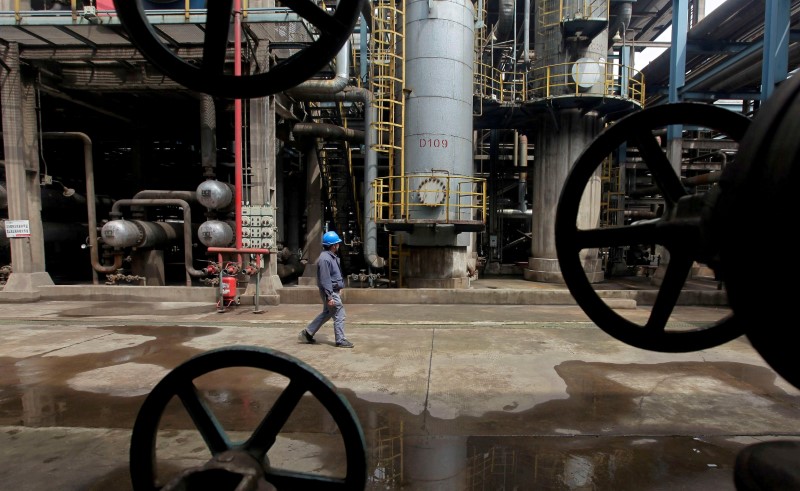By Sudarshan Varadhan
SINGAPORE (Reuters) -Oil prices were set to snap a two-week losing streak as they rose for a fourth consecutive session on Friday due to tightening supplies and expectations of the OPEC+ group of oil producers extending output cuts to the end of the year.
Major benchmarks rose slightly, with the U.S. West Texas Intermediate crude (WTI) up 13 cents, or 0.2%, at $83.76 a barrel, while was up 17 cents, also 0.2%, at $87/bbl as of 0325 GMT. WTI has risen over 5% during the week, while Brent was up about 3%.
Analysts expect Saudi Arabia to extend a voluntary oil production cut of 1 million barrels a day into October, adding to cuts by the Organization Petroleum Exporting Countries and allies, known as OPEC+.
“We continue to expect cuts to be extended, with prices above US$90/bbl (on a sustained basis) required to draw OPEC supply back to market, as well as incentivize U.S. shale producers to increase drilling activity,” the National Australia Bank (OTC:) said in a client note on Friday.
inventories [USOILC=ECI] fell by a more-than-expected 10.6 million barrels last week, government data on Wednesday showed. Commercial crude oil inventories have plunged by 34 million barrels since the middle of July.
Change in U.S. inventories is often viewed as a proxy for global demand-supply balance. Continuous depletion is interpreted as a reflection of potential supply deficit.
“Signs of stronger demand were also evident in the product market, with implied gasoline demand pushing higher for the first time in three weeks,” ANZ said in a research note on Friday.
A weaker U.S. dollar, which looks set to end a six week winning streak, also helped prices. A stronger dollar pressures oil demand by making the commodity more expensive for buyers holding other currencies.
Chinese factory activity returning to expansion and the government stepping up efforts to support its housing market also helped boost oil prices on Friday, on hope such action could help stimulate demand growth in the world’s second-largest oil consumer.
The country’s central bank said on Friday it will cut the amount of foreign exchange that financial institutions must hold in reserve for the first time this year, a move seen aimed at slowing the pace of recent yuan depreciation.
Slowing monthly inflation rates in the U.S. have cemented expectations that the Federal Reserve will keep interest rates unchanged next month. U.S August payrolls data later in the global day could offer more clues.
Read the full article here
